I have been working on making the New York bagel here in Seattle. This is journey which has taken me years, with many failures along the way.
Nov 2018

My first attempt at bagels was on a bit of a whim. I felt like baking something and bagels seemed like a good idea. I looked up a couple recipes online to see what would be kneaded and took stock of what I had available.
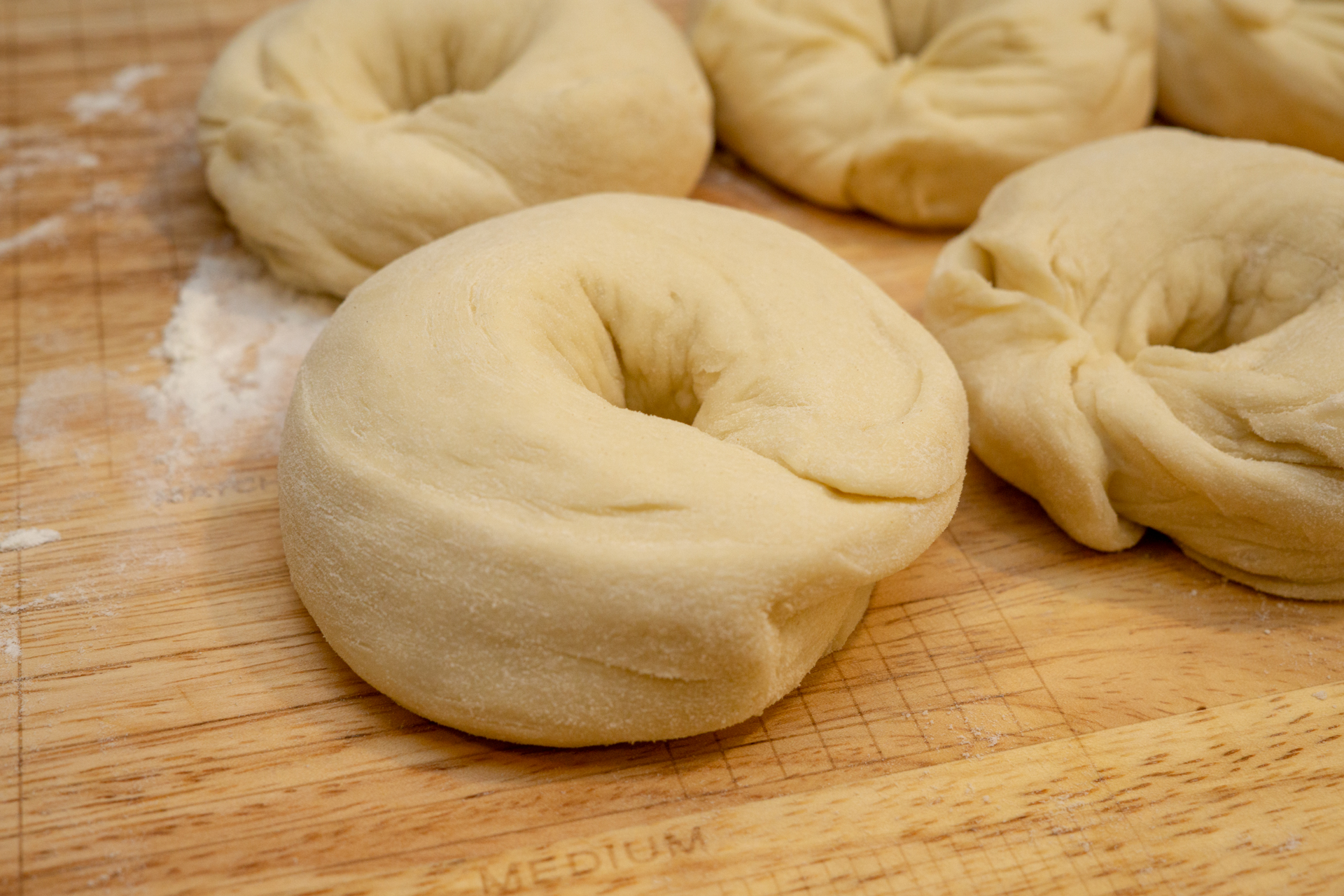
I knew that bagels are boiled before being baked, but I had always assumed that they were boiled in regular water. Reading recipes I found that there are key additives needed when boiling and there is not consensus over what these additives should be. Recipe’s called for sugar, honey, malt syrup, baking soda, baked baking soda, or lye.
Boiling the bagels before baking is done so bagels will develop their signature tough and tasty crust in the oven. The crust of the bagel is so good because of the maillard reaction, the process by which amino acids and sugars turn into a tasty brown crust when exposed to heat, like when searing a steak. The amino acids will come from the gluten protein in the flour. The need for sugar explains recipes adding sugar/honey/malt syrup to the water, as a sugar coating on the dough will help that brown crust form. The form of the sugar seems to be for flavor, with barley malt syrup being the most traditional. I went for plain sugar as I didn’t have malt syrup or honey stocked.

What about baking soda or lye? This seems like another chemical trick to help the bagels bake. Baking soda, especially if you bake it for a while by its self to concentrate it, is very alkaline. These additives are to get the pH of the water relatively high. I didn’t have any lye on hand and to properly prepare the baking soda it should sit in a hot oven for almost and hour, so I skipped these additives. Several of the recipes I has looked at did not include an alkaline in the boil.

The rest of the bake was pretty straight forward. Very similar to making rolls but for the shape. A little proving and the bagels puffed up to their expected size. A quick boil and a bake and I had some very good looking bagels.

The taste and texture where not quite right, though. The bagel crust formed was more similar to a bread crust and didn’t have the shine or dimpling of good bagels. Also because only sugar was used in the boil the bagels had a very sweet taste to them. These were very edible, but not the bagel I was trying to make.
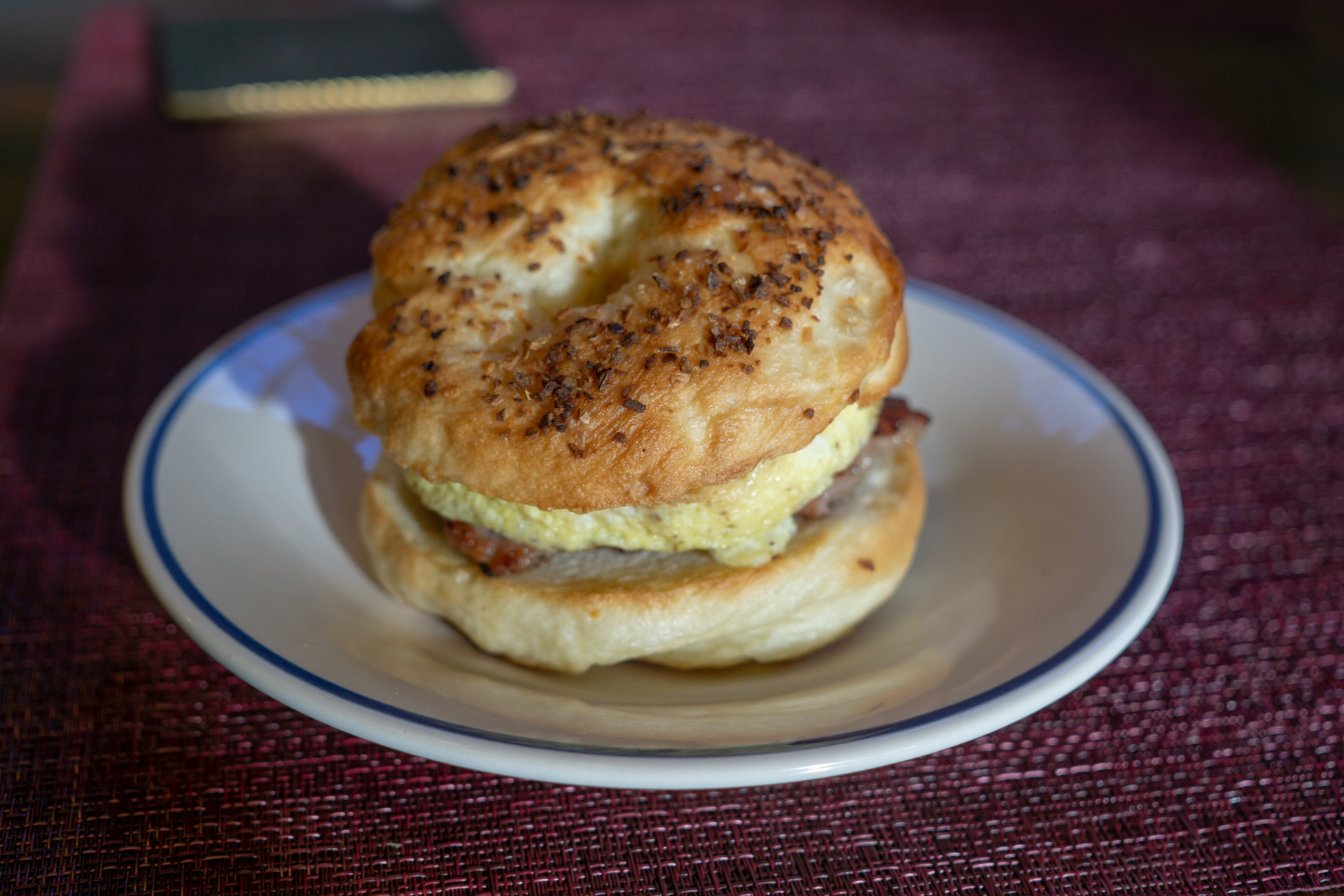
Feb 2019
For my second attempt I got barley malt syrup and lye to strive for the authentic bagel. This time I followed Cook’s Illustrated recipe which differs in two ways, the malt syrup is added to the bagel dough to make sure the malt flavors are there, and the bagels are left overnight to rise in the refrigerator to develop more flavor from the yeast.

Following this recipe and carefully boiling the bagels in lye I got bagels with a beautiful crust, but were completely inedible. Either the yeast I was using was dead to begin with or I had somehow managed to kill it while making the dough but there was no rise in my roll. The bagels were the size and consistency of a hockey puck, and just as appetizing.

April 2019
The third attempt using fresh yeast and the same recipe as attempt number two was more successful. With the bagels getting closer to their expected size.

There were a couple things I think could be done better. Its pretty easy to see all the raw bagels were not the same size and this lead to an interesting range of sizes.

These third round bagels are still not a big as the first attempt and I think some slight misreading of the instructions were to blame. I added some of the salt before adding the yeast which will slow its production of carbon dioxide. And I think I needed to let the bagels prove longer outside the fridge before leaving them overnight.

October 2019

To get more rise in my bagels I decided to leave them on the counter to rise overnight instead of moving them to the refrigerator. A full batch of bagels looking excellent. I also experimented in forming the bagels with half the batch made with “twisted snakes” and half the batch formed by punching a hole in a sphere. After kneading and forming I covered with plastic wrap and left it to rise.

After rising overnights the bagels and the plastic wrap became inseparable. I had forgotten to oil the plastic wrap which caused it to to stick to the dough. Removing the plastic wrap ripped open the developed gluten layers and ruining the bagels.

June 2020
Its a few months into quarantine and everyone has been baking, including myself. After a few loaf of bread I was feeling confidant enough to try making bagels again. Though now I have a sourdough starter, so lets try and make some sourdough bagels. I found this recipe for a New York Style sourdough bagel that was very similar to the recipes I’ve used in the past.

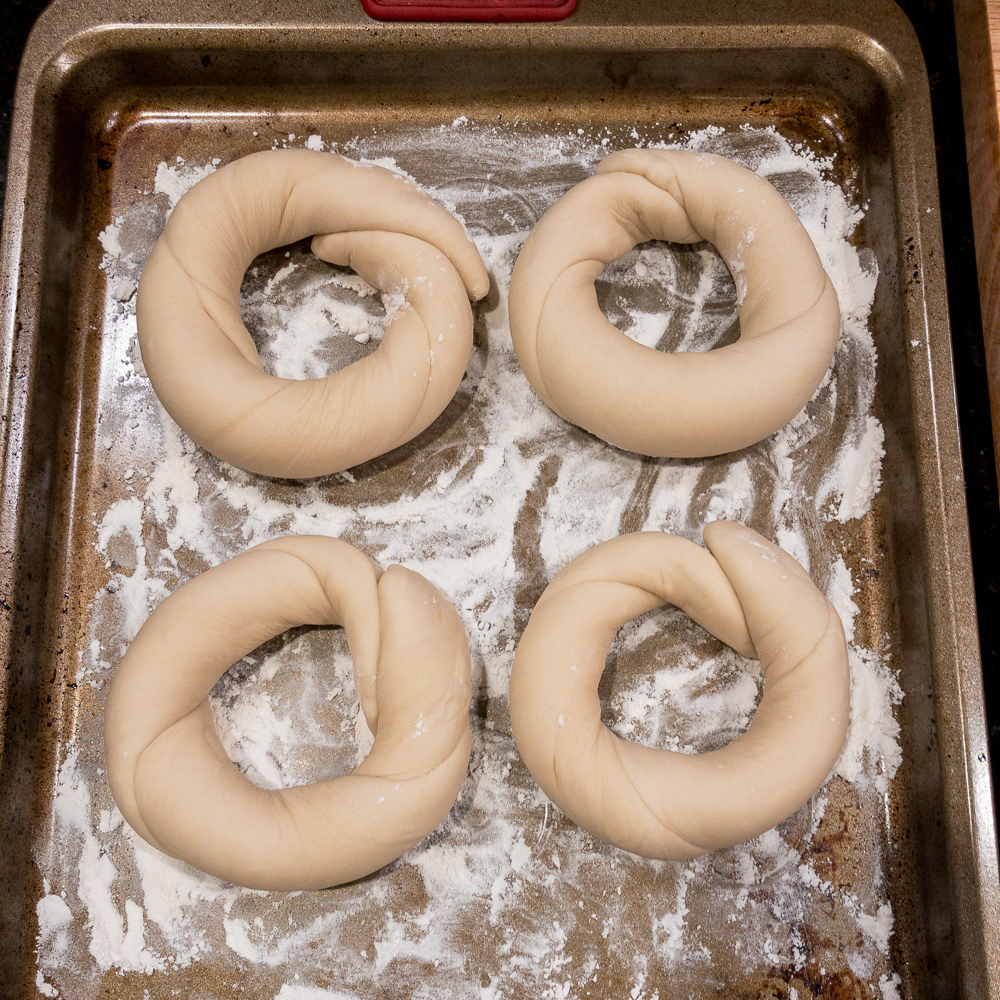
To avoid the pitfalls of covering with plastic wrap from now on I will just use a clean damp kitchen cloth. Keeps the dough from drying out and doesn’t stick like plastic.

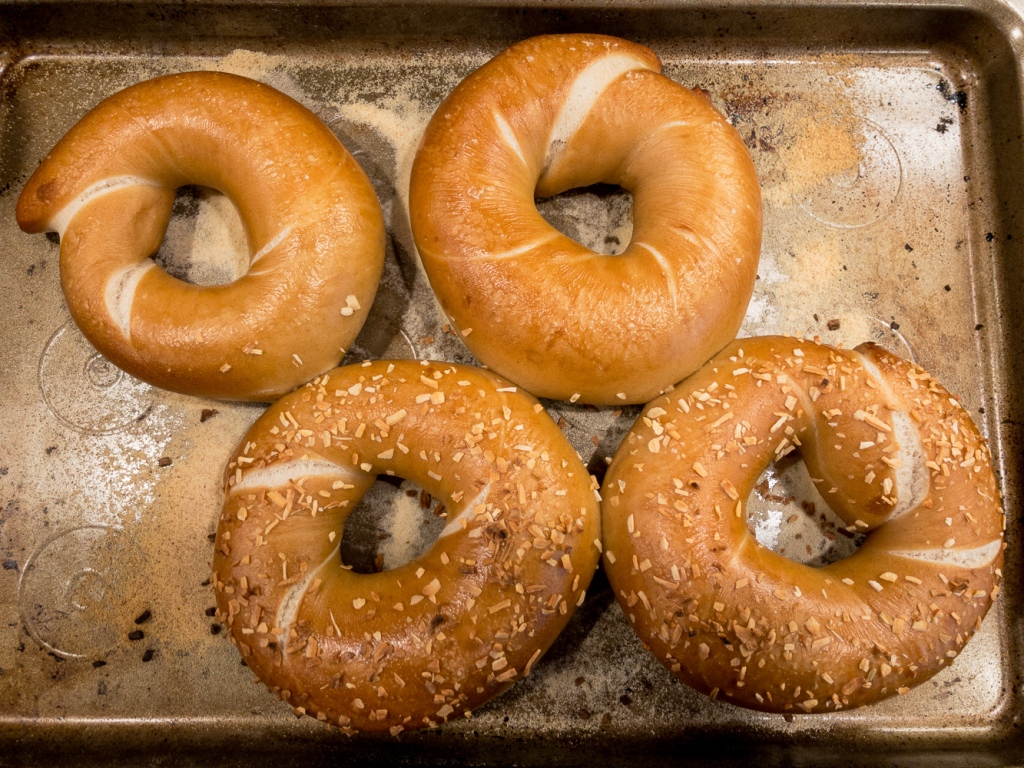



The sourdough bagels were a big success. With halving the batch, they were a little under salted, but by far the best bagels I’ve made yet. The first ones which looked like they really could have come out of a NYC Deli. Encouraged by this test it wasn’t long before I tried making a full batch.
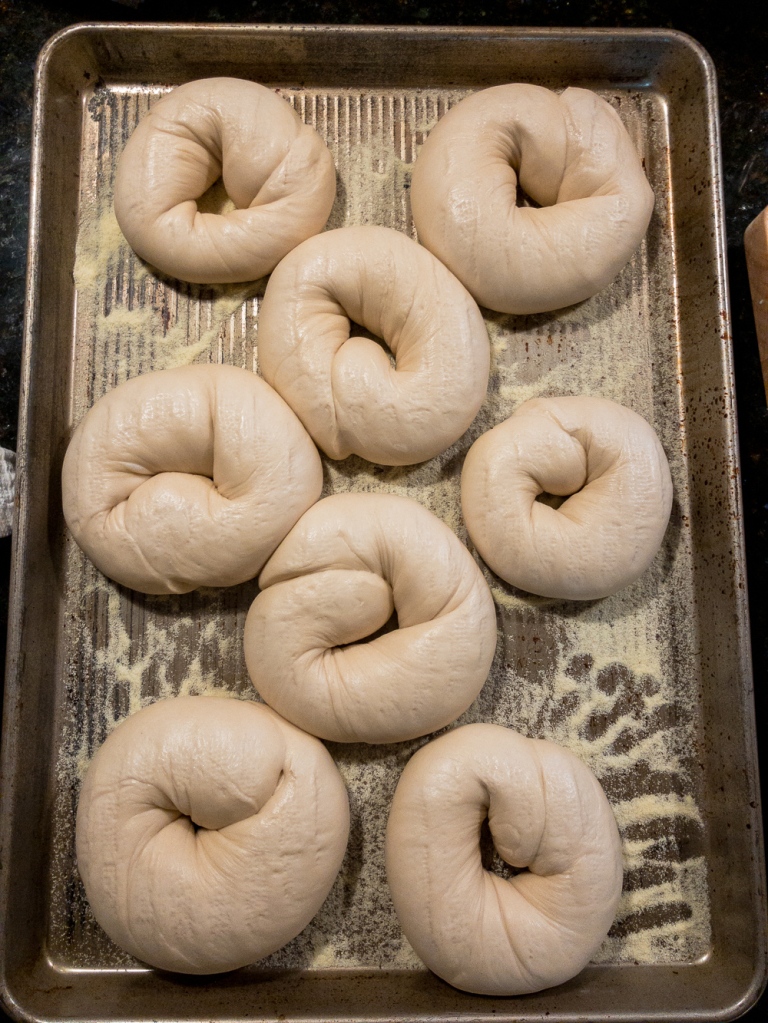
Following the same sourdough recipe (with a few adjustments) resulted in another excellent batch. This time I used a little molasses in the boiling water (the presence of sugar helps the maillard reaction which forms the crust). I think it was a little too much, because combined with a little overcooking these bagels came out a little like pretzels.
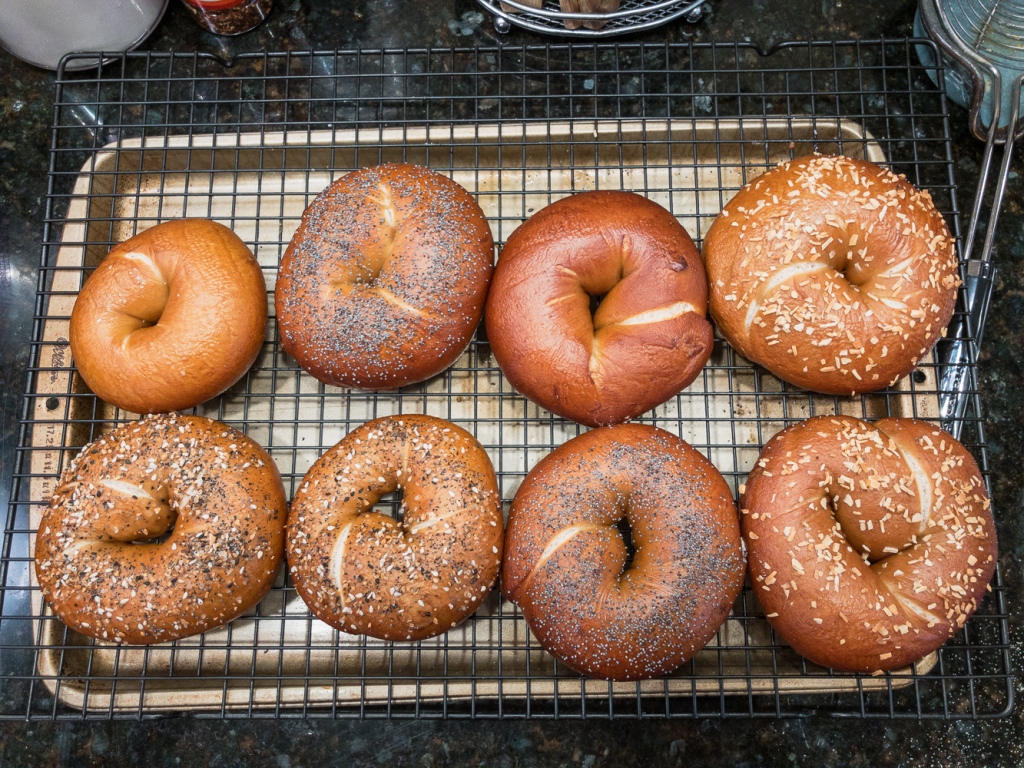
August 2020
With the process mostly figured out; becoming a routine. Whole wheat sourdough everything bagels are a go to; making a big batch and freezing them to be enjoyed later. With butter, cream cheese, or as part of a breakfast sandwich it is always good to have a bagel in hand.


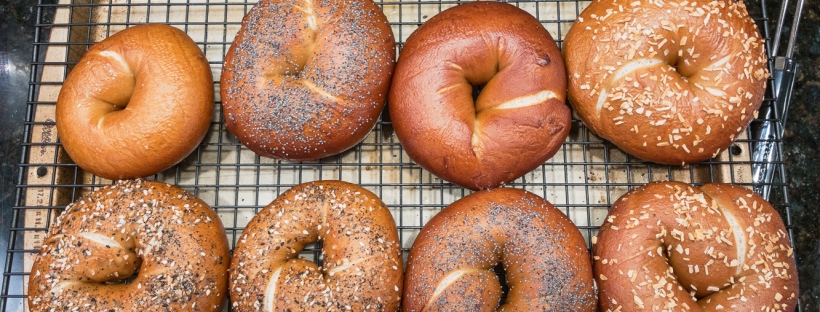
A true chemist and engineer! Makes me so hungry! Too bad though that you don’t like lox or any smoked fish. Keep up the good work.
LikeLiked by 1 person
This was a great read! I’ve always been a fan of bagels, but I had no idea that lye could be used in the process. I applaud your perseverance. 😄🥯
LikeLike
What can I say? Wish you (and they) were here!
LikeLike